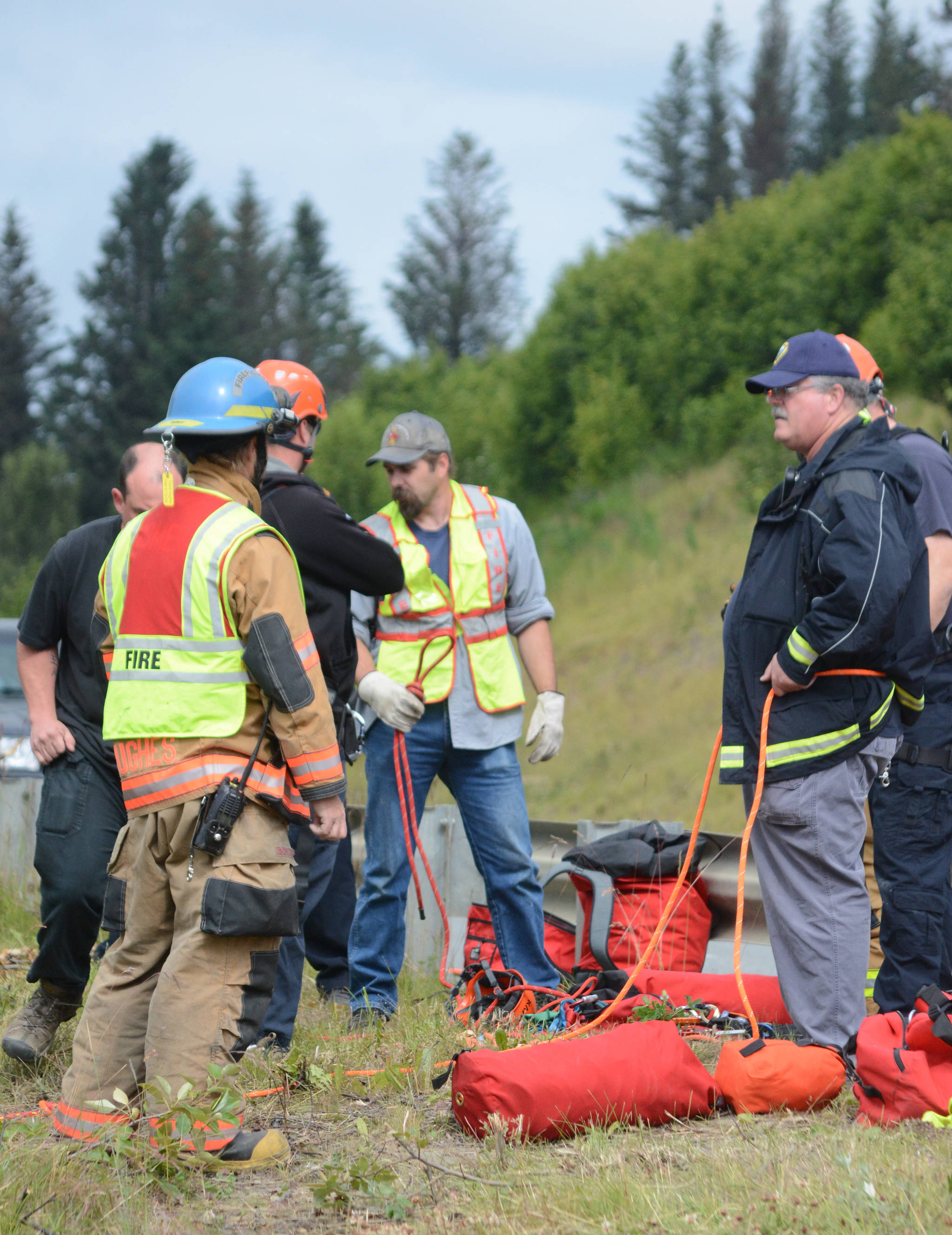After 17 years at the helm of the Homer Volunteer Fire Department and 26 years in Homer, Chief Bob Painter is stepping down this month. He plans to return to his home state of Oklahoma.
A first responder for nearly 40 years, Painter got his start as a volunteer emergency medical technician in Oklahoma. He soon became a paramedic serving Collinsville, a town north of Tulsa, and was then offered a position of assistant director of the area’s ambulance service.
After finishing up his associate and bachelor degrees, Painter said he started looking for jobs in the Pacific Northwest, and that’s when he stumbled upon the assistant chief position open in Homer. He had vacationed in Alaska in 1990, so he knew it would be a good fit. The assistant chief position was the result of the department transitioning from a true volunteer organization to being run by the city, he said. The department still operates with a wide base of volunteers throughout the community, a resource Painter said Homer Fire depends on.
While in a large city first responders might be responsible for just one area or district, Painter said small town firefighters and medics have a responsibility to the entire town, and they know that town well.
“I think it’s better in a lot of ways, because we … know the community better,” he said. “… So you see sometimes the same people, whether they’re hospital staff or medical providers, or patients. You see the patients, you see them more frequently, develop a relationship, a rapport with them easier than in a big city where you may see the same patient once or twice, if that.”
Some of the memories and events that stand out most to Painter over his years in Homer include the implementation of the Kids Don’t Float program, which started in Homer and was eventually adopted by the entire state. One can even see Kids Don’t Float information in the Lower 48, he said.
Other significant events for Painter were the Icicle Seafoods fire of 1998, and seeing the classes of new firefighters and medical first responders go through the department in training. A lot has changed when it comes to that training since Painter entered the scene nearly four decades ago.
“When I started, EMS was based on history. ‘We do it this way because we’ve always done it that way,’” he said. “Care was provided based on what people learned in Vietnam. In fact, my first paramedic instructor was a Vietnam medic and got his experience working on combat injuries.”
Many of the techniques emergency medical services students were taught in the past were based in anecdotal evidence and observations, Painter said.
“Now, EMS is becoming evidence based. It’s becoming based on science and research,” he said. “That’s relatively new, that’s within the last 15 years, and every year there’s something new that comes out that something we did 25 years ago, 30 years ago, really doesn’t work. … They can now back it up with firm research and say ‘It doesn’t work because … we know why now.’ And that’s the biggest thing.”
This is even true when it comes to fire science, Painter said, which most people might think is a relatively simple concept. Find the fire and dump water on it, right? But more recent research on the way modern homes and structures burn is showing that the old “surround and drown” method, as Painter called it, may actually make a comeback when it comes to certain fires.
“Modern buildings, they burn hotter, they burn faster than they used to,” he said.
Firefighting had evolved from the surround and drown technique, focusing on certain areas of a fire while sending crew members inside to rescue trapped people. Modern homes, built with more plastics, particle board and petroleum-based products, burn up to three times faster than homes used to, leading to roofs and walls failing much faster. This presents a greater risk for firefighters inside, Painter said.
Now that fires are burning much hotter and faster, Painter said there’s been a movement back toward the old method in order to protect first responders.
While Painter is stepping away from the HVFD and moving back to Oklahoma, he’s not ready to completely hang up his hat. He’ll be taking on a position as director of EMS and paramedic training at Tulsa Community College. Transitioning back into city life is going to be a big change, he said, but his family is ready to be able to sleep nights without constantly being on call.
A small committee made up of HVFD members and City of Homer staff will select Painter’s replacement. He estimated the search process could take anywhere from three to six months. Painter’s last day is Jan. 26.
As he prepares to leave the Cosmic Hamlet by the Sea, Painter wishes to emphasize the importance of the volunteer firefighters, who adhere to the same standards and requirements as the paid staff. It was with everyone’s help at the department that his career was a successful one, he said.
“I want to make sure that everything that — you know, when they talk about ‘you’re accomplishments’ — everything that I’ve accomplished has been as part of a team in this city,” Painter said. “There’s nothing that I’ve done alone, whether it’s be the chief, or whether it’s be an instructor … that you do in a vacuum.”
Reach Megan Pacer at megan.pacer@homernews.com.


